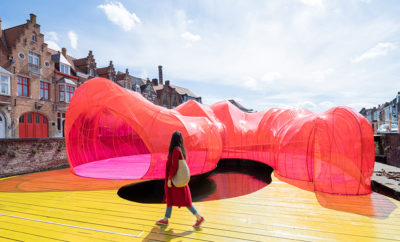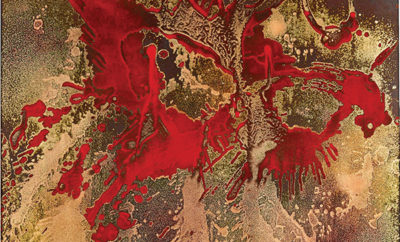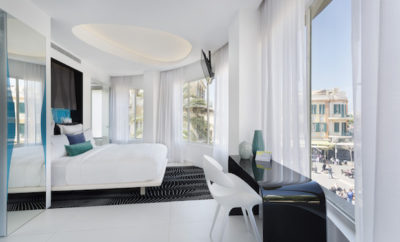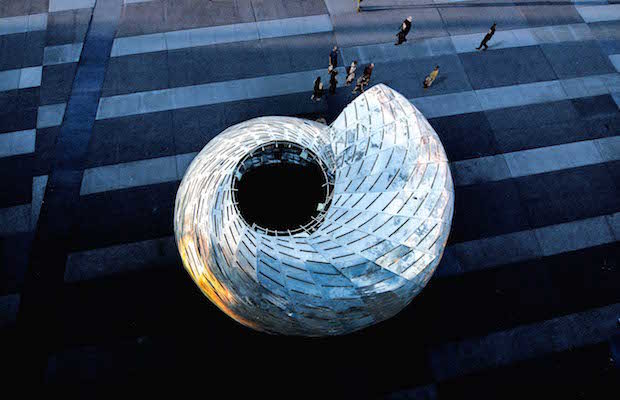 David Delgado
David Delgado
Exhibition
A Futuristic Sound Chamber
SITUATED NEAR A BED OF SPIKY YUCCA AND AGAVE with tangerine floral stalks at the Huntington Library, Art Collections, and Botanical Gardens in San Marino, California, the Orbit Pavilion seems like an elegantly designed spaceship fortuitously parked in the desert. Conversely, you might see it as a giant silver nautilus accidentally tossed ashore from the sea. Indeed, architect Jason Klimoski has talked about how the design was stimulated by childhood memories of holding a shell to his ear and hearing the ocean: “I proposed making a big shell to hold the sound of space,” he says.
The project is actually a collaboration that began in 2005, when Dan Goods and David Delgado, visual strategists at NASA’s Jet Propulsion Laboratory, got the idea for a sound dome installation to demonstrate patterns of NASA satellites and their radio waves, translating the movement of earth science spacecraft into something that could be tracked through listening. In November 2014 they discussed the venture with sound artist Shane Myrbeck from Oakland, California, and a few months later they asked Klimoski and Lesley Chang from STUDIOKCA in New York to build the physical edifice, literally a shell with speakers mounted along the walls. Myrbeck allocated signature sounds to nineteen satellites and the International Space Station, and used algorithms to create a continually changing minimalist tone poem that fills the double-curved structure with a soundscape that ranges from the hollow clicking of cicadas to a noise that resembles Tibetan bells. Assembled from water-jet-cut aluminum panels, each bent to a different degree and riveted, stitched, and fastened to a framework of tubes, the construction extends about twenty-eight feet in diameter and can easily hold a classroom of kids or a small swarm of listeners. At the center of the perforated sound chamber, a ten-foot wide oculus allows visitors to look up at a circle of sky where birds pass overhead during the day and stars or satellites might be seen at night. Completely portable, the Orbit Pavilion was originally shown at the World Science Festival in New York in 2015. It will remain at the Huntington until September 4.
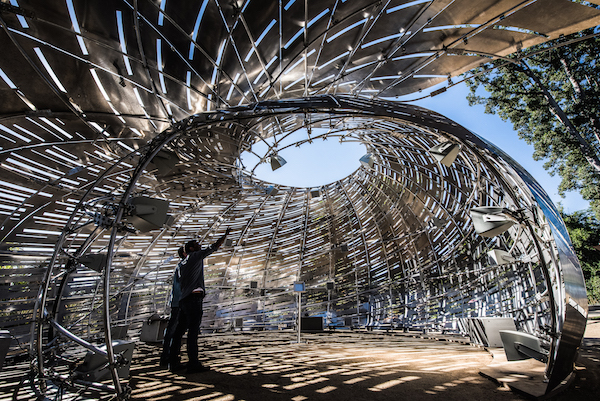
Dan Goods


